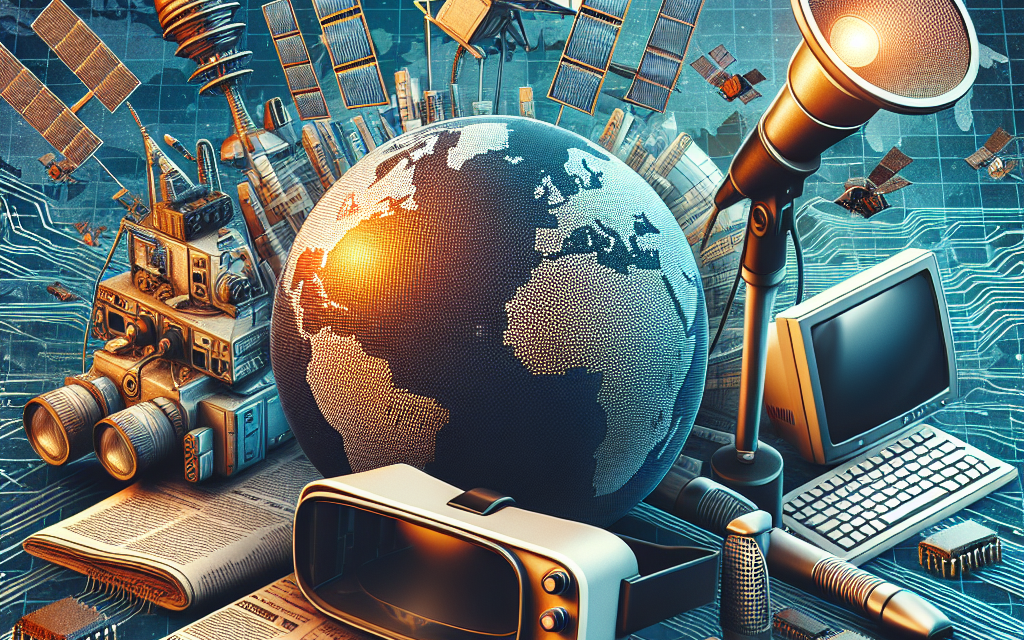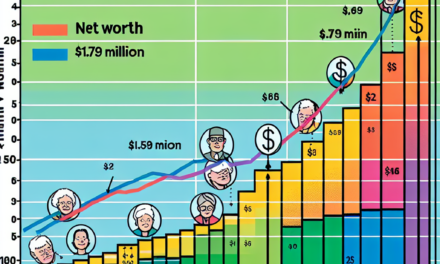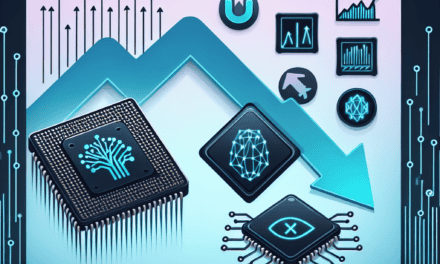“Unlocking Tomorrow: Essential Insights into Tech, Media, and Telecom Markets.”
Introduction
Tech, Media, and Telecom Insights: Market Highlights provides a comprehensive overview of the latest trends, developments, and performance metrics within the technology, media, and telecommunications sectors. This report analyzes key market dynamics, emerging technologies, and consumer behaviors that are shaping the landscape. It highlights significant mergers and acquisitions, investment patterns, and regulatory changes, offering stakeholders valuable insights to navigate the rapidly evolving environment. By synthesizing data and expert analysis, this report serves as a crucial resource for industry leaders, investors, and policymakers seeking to understand the current state and future direction of these interconnected markets.
Emerging Trends in 5G Technology
The advent of 5G technology marks a significant milestone in the evolution of telecommunications, promising to reshape various sectors by enhancing connectivity and enabling new applications. As the rollout of 5G networks accelerates globally, several emerging trends are becoming increasingly apparent, highlighting the transformative potential of this technology. One of the most notable trends is the expansion of Internet of Things (IoT) applications, which are set to benefit immensely from the high-speed, low-latency capabilities of 5G. With the ability to connect a vast number of devices simultaneously, 5G facilitates the development of smart cities, autonomous vehicles, and advanced industrial automation, thereby driving efficiency and innovation across multiple domains.
Moreover, the integration of 5G with edge computing is another trend gaining traction. By processing data closer to the source rather than relying solely on centralized cloud servers, edge computing reduces latency and enhances the performance of applications that require real-time data processing. This synergy between 5G and edge computing is particularly beneficial for industries such as healthcare, where remote surgeries and telemedicine applications demand instantaneous data transmission. As a result, healthcare providers can leverage these technologies to improve patient outcomes and streamline operations.
In addition to these technological advancements, the competitive landscape within the telecommunications sector is evolving. Major telecom operators are investing heavily in 5G infrastructure, not only to enhance their service offerings but also to differentiate themselves in a crowded market. This investment is leading to strategic partnerships and collaborations, particularly with technology companies and startups that specialize in IoT and artificial intelligence. Such alliances are crucial for developing innovative solutions that harness the full potential of 5G, thereby creating new revenue streams and enhancing customer experiences.
Furthermore, the emergence of private 5G networks is another significant trend that is reshaping the market. Enterprises are increasingly recognizing the value of dedicated networks that offer enhanced security, reliability, and control over their connectivity. Industries such as manufacturing, logistics, and energy are particularly well-positioned to benefit from private 5G networks, as they can optimize operations and improve productivity through real-time data analytics and automation. This shift towards private networks not only empowers businesses to tailor their connectivity solutions to specific needs but also fosters a more resilient and agile operational framework.
As 5G technology continues to mature, the focus on sustainability is becoming increasingly important. Telecom companies are exploring ways to minimize the environmental impact of their networks, such as implementing energy-efficient technologies and utilizing renewable energy sources. This commitment to sustainability aligns with broader global efforts to address climate change and promote responsible business practices. By prioritizing eco-friendly initiatives, telecom operators can enhance their brand reputation while contributing to a more sustainable future.
In conclusion, the emerging trends in 5G technology are indicative of a broader transformation within the tech, media, and telecom sectors. The convergence of 5G with IoT, edge computing, and private networks is paving the way for innovative applications that promise to enhance efficiency and connectivity across various industries. As telecom operators continue to invest in infrastructure and forge strategic partnerships, the potential for growth and innovation remains vast. Ultimately, the successful implementation of 5G technology will not only redefine how we connect but also unlock new opportunities for businesses and consumers alike, heralding a new era of digital transformation.
The Impact of AI on Media Consumption
The advent of artificial intelligence (AI) has significantly transformed various sectors, with media consumption being one of the most profoundly affected areas. As technology continues to evolve, the integration of AI into media platforms has reshaped how content is created, distributed, and consumed. This transformation is not merely a trend; it represents a fundamental shift in the relationship between consumers and media, driven by the capabilities of AI to analyze vast amounts of data and personalize user experiences.
One of the most notable impacts of AI on media consumption is the enhancement of personalization. Streaming services, news platforms, and social media networks increasingly rely on AI algorithms to curate content tailored to individual preferences. By analyzing user behavior, such as viewing history and engagement patterns, these platforms can recommend shows, articles, or videos that align with a user’s interests. This level of personalization not only improves user satisfaction but also increases engagement, as consumers are more likely to spend time on platforms that consistently deliver relevant content.
Moreover, AI has revolutionized content creation itself. Tools powered by AI can assist in generating news articles, producing video content, and even composing music. For instance, natural language processing algorithms can analyze data and generate reports on current events, allowing media organizations to produce timely content with greater efficiency. This capability not only streamlines the production process but also enables journalists to focus on more in-depth reporting and investigative work, thereby enhancing the overall quality of media output.
In addition to content creation and personalization, AI has also played a crucial role in optimizing advertising strategies within the media landscape. By leveraging machine learning algorithms, advertisers can analyze consumer data to identify target demographics more accurately. This precision allows for the development of highly targeted advertising campaigns that resonate with specific audiences, ultimately leading to higher conversion rates. As a result, advertisers are increasingly investing in AI-driven solutions to maximize their return on investment, further intertwining the relationship between technology and media consumption.
However, the integration of AI into media consumption is not without its challenges. Concerns regarding data privacy and the ethical implications of algorithm-driven content curation have emerged as significant issues. As AI systems collect and analyze user data to enhance personalization, questions arise about how this data is used and whether consumers are adequately informed about these practices. Furthermore, the potential for algorithmic bias poses a risk, as AI systems may inadvertently reinforce existing stereotypes or limit exposure to diverse viewpoints. Addressing these concerns is essential for fostering trust between consumers and media platforms.
As we look to the future, the impact of AI on media consumption is likely to deepen. The continuous advancement of AI technologies will enable even more sophisticated content recommendations and innovative forms of media. For instance, the rise of virtual and augmented reality experiences, powered by AI, could redefine how audiences engage with content, creating immersive environments that enhance storytelling. Additionally, as AI becomes more integrated into everyday life, the demand for seamless and intuitive media experiences will only grow, prompting media organizations to adapt and innovate.
In conclusion, the influence of AI on media consumption is profound and multifaceted. From personalized content recommendations to enhanced advertising strategies, AI is reshaping the media landscape in ways that were previously unimaginable. While challenges remain, the potential for AI to enrich the media experience is significant, paving the way for a future where technology and creativity converge to meet the evolving needs of consumers. As this dynamic relationship continues to develop, stakeholders in the media industry must remain vigilant in addressing ethical considerations while embracing the opportunities that AI presents.
Telecom Industry Consolidation: Key Players and Predictions
The telecom industry has been undergoing significant consolidation in recent years, driven by the need for companies to enhance their competitive edge, streamline operations, and adapt to rapidly changing technological landscapes. As market dynamics evolve, key players in the sector are increasingly seeking mergers and acquisitions to bolster their market positions and expand their service offerings. This trend is not merely a response to competitive pressures; it also reflects the broader shifts in consumer behavior and technological advancements that are reshaping the industry.
One of the most notable aspects of this consolidation is the emergence of larger entities that can leverage economies of scale. By combining resources, companies can reduce operational costs, improve service delivery, and invest more heavily in innovation. For instance, major telecom providers have been acquiring smaller firms to enhance their capabilities in areas such as 5G deployment, fiber-optic infrastructure, and digital services. This strategic maneuvering allows them to offer a more comprehensive suite of services, catering to both residential and business customers.
Moreover, the consolidation trend is not limited to traditional telecom operators. Tech giants are increasingly entering the fray, recognizing the value of integrating telecom capabilities into their existing ecosystems. Companies like Amazon and Google have shown interest in telecommunications, either through partnerships or direct investments. This influx of technology firms into the telecom space is reshaping the competitive landscape, as they bring innovative approaches and advanced technologies that challenge traditional business models.
As we look ahead, several predictions can be made regarding the future of telecom industry consolidation. First, it is likely that we will see continued mergers and acquisitions among regional players seeking to enhance their market presence. Smaller operators may find it increasingly difficult to compete against larger, more resource-rich companies, prompting them to seek partnerships or sell to larger entities. This trend could lead to a more concentrated market, with a few dominant players controlling a significant share of the industry.
Additionally, regulatory scrutiny will play a crucial role in shaping the consolidation landscape. As companies pursue mergers, they will face increased examination from regulatory bodies concerned about maintaining competition and protecting consumer interests. This scrutiny may lead to more stringent conditions for approval, potentially slowing the pace of consolidation. However, if companies can demonstrate that their mergers will lead to improved services and greater innovation, they may still find pathways to success.
Furthermore, the ongoing evolution of technology will continue to drive consolidation. The rollout of 5G networks, for example, requires substantial investment and expertise, prompting companies to seek partnerships that can facilitate this transition. As the demand for high-speed connectivity grows, companies that can effectively combine their resources and capabilities will be better positioned to meet consumer expectations and capitalize on new market opportunities.
In conclusion, the telecom industry is poised for continued consolidation as key players navigate a complex landscape marked by technological advancements and shifting consumer demands. The interplay between traditional telecom operators and emerging tech companies will further shape the market dynamics, leading to a more integrated and competitive environment. As this evolution unfolds, stakeholders must remain vigilant, adapting to the changes while striving to deliver enhanced value to consumers in an increasingly interconnected world.
The Rise of Streaming Services: Market Dynamics
The rise of streaming services has fundamentally transformed the landscape of media consumption, reshaping not only how content is delivered but also how it is produced and monetized. As traditional cable subscriptions continue to decline, streaming platforms have emerged as the preferred choice for consumers seeking flexibility and a diverse array of content. This shift has been driven by several market dynamics, including changing consumer preferences, technological advancements, and competitive pressures.
To begin with, the changing preferences of consumers play a pivotal role in the ascendance of streaming services. Modern audiences increasingly favor on-demand access to content, allowing them to watch their favorite shows and movies at their convenience. This desire for flexibility is particularly evident among younger demographics, who are more inclined to forgo traditional cable packages in favor of subscription-based models. As a result, streaming services have tailored their offerings to meet these demands, providing a vast library of content that spans various genres and formats. This adaptability not only attracts new subscribers but also fosters loyalty among existing users, creating a robust ecosystem that encourages continuous engagement.
Moreover, technological advancements have significantly contributed to the growth of streaming services. The proliferation of high-speed internet and the widespread adoption of smart devices have made it easier than ever for consumers to access streaming content. With the ability to stream high-definition video on smartphones, tablets, and smart TVs, audiences can enjoy their favorite programming anytime and anywhere. Additionally, innovations in content delivery, such as adaptive streaming technology, have enhanced the viewing experience by minimizing buffering and optimizing video quality based on the user’s internet connection. These technological improvements have not only elevated consumer satisfaction but have also positioned streaming services as a viable alternative to traditional media.
In addition to consumer preferences and technological advancements, competitive pressures within the market have further fueled the rise of streaming services. As established players like Netflix and Amazon Prime Video continue to dominate the landscape, new entrants are emerging, each vying for a share of the growing audience. This influx of competition has led to a surge in original content production, as platforms seek to differentiate themselves and attract subscribers. Consequently, viewers are treated to an unprecedented variety of programming, ranging from blockbuster films to critically acclaimed series. This content diversity not only enhances the overall appeal of streaming services but also drives subscriber growth, as consumers are drawn to platforms that offer unique and engaging content.
Furthermore, the business models employed by streaming services have evolved to accommodate changing market dynamics. Many platforms have adopted a hybrid approach, combining subscription-based models with ad-supported tiers to cater to a broader audience. This flexibility allows consumers to choose how they wish to engage with content, whether through a monthly subscription or by watching ads in exchange for free access. As a result, streaming services can maximize their revenue potential while providing options that align with consumer preferences.
In conclusion, the rise of streaming services is a multifaceted phenomenon driven by changing consumer preferences, technological advancements, and competitive pressures. As audiences continue to embrace on-demand content, streaming platforms are poised to play an increasingly central role in the media landscape. The ongoing evolution of this sector will undoubtedly shape the future of entertainment, as both established and emerging players strive to meet the ever-changing demands of viewers. As the market dynamics continue to unfold, stakeholders must remain vigilant and adaptable to navigate the complexities of this rapidly evolving industry.
Cybersecurity Challenges in the Tech Sector
In the rapidly evolving landscape of technology, media, and telecommunications, cybersecurity has emerged as a paramount concern for organizations across the globe. As businesses increasingly rely on digital infrastructure to operate, the vulnerabilities associated with cyber threats have become more pronounced. This reality is underscored by the growing sophistication of cybercriminals, who continuously develop new tactics to exploit weaknesses in systems and networks. Consequently, organizations must remain vigilant and proactive in addressing these challenges to safeguard their assets and maintain consumer trust.
One of the most pressing cybersecurity challenges in the tech sector is the rise of ransomware attacks. These malicious incidents involve cybercriminals encrypting an organization’s data and demanding a ransom for its release. The frequency and severity of such attacks have surged, with high-profile cases making headlines and causing significant operational disruptions. As a result, companies are compelled to invest heavily in robust cybersecurity measures, including advanced threat detection systems and employee training programs aimed at fostering a culture of security awareness. By doing so, organizations can mitigate the risks associated with ransomware and other cyber threats.
Moreover, the increasing interconnectivity of devices through the Internet of Things (IoT) has introduced additional vulnerabilities. While IoT devices offer numerous benefits, such as improved efficiency and data collection, they also present unique security challenges. Many of these devices lack adequate security features, making them attractive targets for cybercriminals. As organizations adopt IoT solutions, they must prioritize the implementation of security protocols to protect these devices and the networks they connect to. This includes regular software updates, strong authentication measures, and comprehensive monitoring systems to detect any unusual activity.
In addition to these challenges, the tech sector faces regulatory pressures that further complicate the cybersecurity landscape. Governments around the world are increasingly enacting stringent data protection laws, requiring organizations to comply with specific security standards. Non-compliance can result in severe penalties, not to mention reputational damage. As such, companies must not only focus on enhancing their cybersecurity posture but also ensure that they are in alignment with regulatory requirements. This necessitates a thorough understanding of the legal landscape and the implementation of policies that address both security and compliance.
Furthermore, the human element remains a critical factor in cybersecurity. Despite technological advancements, employees often represent the weakest link in an organization’s security framework. Phishing attacks, for instance, exploit human psychology to gain unauthorized access to sensitive information. Therefore, organizations must invest in comprehensive training programs that educate employees about potential threats and best practices for maintaining security. By fostering a culture of vigilance and accountability, companies can significantly reduce the likelihood of successful cyberattacks.
As the tech sector continues to navigate these cybersecurity challenges, collaboration will be essential. Industry stakeholders, including technology providers, government agencies, and academic institutions, must work together to share information and best practices. This collaborative approach can lead to the development of innovative solutions that enhance overall security resilience. Additionally, organizations should consider participating in information-sharing initiatives that allow them to stay informed about emerging threats and vulnerabilities.
In conclusion, the cybersecurity challenges facing the tech sector are multifaceted and require a comprehensive response. By prioritizing investment in security measures, fostering employee awareness, ensuring regulatory compliance, and promoting collaboration, organizations can better protect themselves against the ever-evolving landscape of cyber threats. As the digital world continues to expand, the importance of a robust cybersecurity strategy cannot be overstated, making it a critical component of any successful business strategy in the tech sector.
Innovations in Smart Home Technology
The landscape of smart home technology has undergone a remarkable transformation in recent years, driven by rapid advancements in artificial intelligence, connectivity, and user-centric design. As consumers increasingly seek convenience, security, and energy efficiency, the market has responded with a plethora of innovative solutions that enhance everyday living. One of the most significant trends in this domain is the integration of voice-activated assistants, which have become central to the smart home experience. Devices such as Amazon Echo and Google Nest have not only revolutionized how users interact with their homes but have also paved the way for a more interconnected ecosystem of smart devices.
Moreover, the rise of the Internet of Things (IoT) has facilitated seamless communication between various smart devices, allowing for a cohesive and automated home environment. For instance, smart thermostats can learn user preferences and adjust heating and cooling systems accordingly, leading to substantial energy savings. Similarly, smart lighting systems can be programmed to respond to natural light levels or user schedules, enhancing both comfort and efficiency. This interconnectedness is further exemplified by the development of smart security systems, which utilize cameras, motion sensors, and alarms that can be monitored remotely via smartphones. Such innovations not only provide peace of mind but also empower homeowners to take proactive measures in safeguarding their properties.
In addition to enhancing convenience and security, smart home technology is increasingly focusing on sustainability. As environmental concerns gain prominence, manufacturers are developing products that promote energy efficiency and reduce carbon footprints. Smart appliances, for example, can optimize energy usage by operating during off-peak hours or adjusting their performance based on real-time energy prices. Furthermore, smart irrigation systems can monitor weather conditions and soil moisture levels, ensuring that water is used judiciously in landscaping. These advancements not only contribute to a more sustainable lifestyle but also resonate with consumers who are increasingly prioritizing eco-friendly solutions.
Transitioning from individual devices to comprehensive systems, the concept of smart home hubs has emerged as a pivotal innovation. These hubs serve as central control points for various smart devices, allowing users to manage their home environment from a single interface. By consolidating control, these hubs simplify the user experience and enhance the functionality of smart devices. As a result, consumers can create customized routines that align with their lifestyles, such as setting the thermostat to a comfortable temperature before arriving home or scheduling lights to turn on at dusk.
Furthermore, the integration of artificial intelligence into smart home technology is set to redefine user interactions. AI-driven systems can analyze user behavior and preferences, enabling them to anticipate needs and automate tasks without explicit commands. This level of personalization not only enhances user satisfaction but also fosters a deeper connection between consumers and their smart home environments. As these technologies continue to evolve, the potential for innovation remains vast, with ongoing research and development promising even more sophisticated solutions in the near future.
In conclusion, the innovations in smart home technology reflect a broader trend towards enhanced convenience, security, and sustainability. As the market continues to expand, driven by consumer demand and technological advancements, the future of smart homes appears increasingly promising. With the integration of AI, IoT, and user-centric design, the smart home experience is poised to become more intuitive and responsive, ultimately transforming how individuals interact with their living spaces. As these innovations unfold, they will undoubtedly shape the way we perceive and engage with our homes, making them not just places of residence but intelligent environments that cater to our evolving needs.
The Future of Digital Advertising in a Post-Cookie World
As the digital advertising landscape continues to evolve, the impending phase of a post-cookie world presents both challenges and opportunities for marketers and advertisers. The deprecation of third-party cookies, which has been a cornerstone of online tracking and targeted advertising, is prompting a significant shift in how brands engage with consumers. This transition is not merely a technical adjustment; it represents a fundamental change in the relationship between advertisers and their audiences.
In the absence of cookies, advertisers are compelled to rethink their strategies for audience targeting and measurement. Traditionally, cookies have enabled the collection of granular data about user behavior, allowing for highly personalized advertising experiences. However, as privacy regulations tighten and consumer awareness of data privacy grows, reliance on such tracking methods is becoming increasingly untenable. Consequently, brands must explore alternative approaches that respect user privacy while still delivering effective advertising.
One promising avenue is the rise of first-party data. Unlike third-party data, which is collected from various external sources, first-party data is gathered directly from consumers through interactions with a brand’s own platforms. This data is not only more reliable but also inherently more respectful of consumer privacy, as it is obtained with consent. Brands that invest in building robust first-party data strategies will likely find themselves at a competitive advantage in the post-cookie landscape. By leveraging insights from their own customer interactions, companies can create more relevant and personalized marketing campaigns that resonate with their audiences.
Moreover, the emergence of privacy-centric technologies and frameworks is reshaping the digital advertising ecosystem. Initiatives such as Google’s Privacy Sandbox aim to provide solutions that allow for targeted advertising without compromising user privacy. These innovations focus on aggregating data and using machine learning to infer user interests without exposing individual identities. As these technologies gain traction, they may offer a viable path forward for advertisers seeking to maintain effectiveness in their campaigns while adhering to new privacy standards.
In addition to technological advancements, the post-cookie world is also fostering a renewed emphasis on contextual advertising. This approach involves placing ads based on the content of the webpage rather than relying on user-specific data. By aligning advertisements with relevant content, brands can still capture consumer attention and drive engagement without the need for invasive tracking methods. As consumers become more discerning about their online experiences, contextual advertising may emerge as a preferred strategy that balances relevance with respect for privacy.
Furthermore, collaboration among industry stakeholders is essential in navigating this transition. Advertisers, publishers, and technology providers must work together to establish new standards and practices that prioritize consumer privacy while ensuring the sustainability of the digital advertising ecosystem. This collaborative effort can lead to the development of innovative solutions that address the challenges posed by the loss of cookies, ultimately benefiting all parties involved.
In conclusion, the future of digital advertising in a post-cookie world is characterized by a shift towards greater consumer privacy, the utilization of first-party data, and the exploration of new technologies and strategies. While the challenges are significant, they also present an opportunity for brands to build more meaningful relationships with their audiences. By embracing these changes and adapting to the evolving landscape, advertisers can not only survive but thrive in this new era of digital marketing. As the industry moves forward, the focus will undoubtedly remain on finding the right balance between effective advertising and consumer trust.
Q&A
1. **Question:** What are the key trends in the tech industry for 2023?
**Answer:** Key trends include increased adoption of artificial intelligence, growth in cloud computing, and a focus on cybersecurity.
2. **Question:** How is the media landscape evolving in 2023?
**Answer:** The media landscape is shifting towards streaming services, personalized content delivery, and the integration of augmented reality.
3. **Question:** What impact is 5G technology having on telecom markets?
**Answer:** 5G technology is enhancing mobile connectivity, enabling faster data speeds, and facilitating the growth of IoT applications.
4. **Question:** What are the major challenges facing the telecom industry?
**Answer:** Major challenges include regulatory pressures, competition from non-traditional players, and the need for significant infrastructure investment.
5. **Question:** How are consumer preferences changing in the media sector?
**Answer:** Consumers are increasingly favoring on-demand content, ad-free experiences, and platforms that offer diverse programming.
6. **Question:** What role does sustainability play in tech and telecom strategies?
**Answer:** Sustainability is becoming a priority, with companies focusing on reducing carbon footprints, improving energy efficiency, and promoting responsible sourcing.
7. **Question:** What are the growth opportunities in the tech sector for startups?
**Answer:** Growth opportunities include developing niche software solutions, leveraging AI for automation, and creating innovative fintech products.
Conclusion
The Tech, Media, and Telecom sectors are experiencing significant growth driven by advancements in technology, increased digital consumption, and evolving consumer behaviors. Key highlights include the rise of streaming services, the expansion of 5G networks, and the integration of artificial intelligence across various platforms. Companies are focusing on innovation and strategic partnerships to enhance user experiences and capture market share. Overall, the landscape is dynamic, with ongoing challenges and opportunities that will shape the future of these industries.





